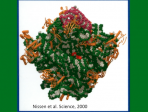 00:28:00
00:28:00
From the Structure of the Ribosome to New Antibiotics
Structural studies of the ribosome exemplify the evolution of structural studies in cell biology from the early negatively stained images of macromolecular assemblies in whole cells, to a detailed atomic understanding of the mechanisms of action of a....
More details | Watch now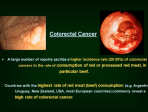 00:31:00
00:31:00
Infections Linked to Human Cancers: Mechanisms and Synergisms
Slightly more than 20% of the global cancer incidence is presently being linked to viral, bacterial, or parasitic infections. The mechanisms by which these agents mediate malignant transformation differ substantially. Some contribute directly, freq....
More details | Watch now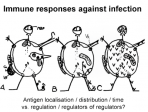 00:32:00
00:32:00
Why Do We Not Have a Vaccine Against HIV or Tuberculosis?
Analysis of the immune system is fascinating and progressing rapidly. As a field of medical enquiry, it has however, drifted and turned purely academic. This is because interest and appreciation of protective immunity in infectious disease medicine....
More details | Watch now 00:32:00
00:32:00
On The Road Toward an HIV Cure
Since the first cases of AIDS in 1981 and the identification of its etiological agent in 1983, much progress has been made in both the development of tools to prevent and treat HIV infection and the access to these tools. In particular, the wide arr....
More details | Watch now 00:30:00
00:30:00
Inheritance from Teratomas
The techniques and concepts that have resulted in the identification and isolation of embryonic stem cells have come from studies with mouse teratocarcinomas. Embryonic stem cells isolated from normal mouse embryos may be grown in tissue culture and....
More details | Watch now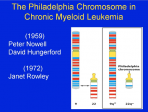 00:31:00
00:31:00
Forging a Genetic Paradigm for Cancer
It is now axiomatic that, no matter what its causes, cancer ultimately arises from the malfunction of genes. A number of clues prefigured this paradigm: the persistence of the malignant phenotype through countless cell divisions; the mutagenicity of....
More details | Watch now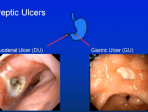 00:32:00
00:32:00
Man vs. Helicobacter _ The past 50,000 years and the next 50
The epidemiology of Helicobacter pylori continues to be an area of discovery and controversy in the 21st century. The transmission of this bacterium from mother to child allows Helicobacter DNA to mimic the evolution of maternal mitochondria DNA. B....
More details | Watch now 00:31:00
00:31:00
Deciphering Immunity by Making It Fail
Infectious microbes collectively represent the strongest selective pressure operating on our species, and over hundreds of millions of years, drove the evolution of the sophisticated immune system we have today. While the general outlines of immune ....
More details | Watch now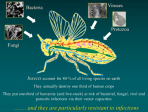 00:32:00
00:32:00
Innate Immunity: From Flies to Humans
Flies challenged with bacteria or fungi rapidly transcribe a battery of genes encoding potent antimicrobial peptides which oppose the invading microorganisms. Genetic analysis has identified two signaling cascades which control their expression: (1)....
More details | Watch now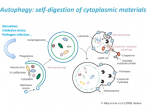 00:31:00
00:31:00
Genes and Proteins that Control Secretion and Autophagy
The broad outlines of the secretory pathway were established by pioneering EM and cell fractionation experiments conducted by George Palade in the 1960s. Beginning in the mid 1970s and early 80s, my laboratory isolated a series of conditionally leth....
More details | Watch now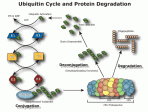 00:40:00
00:40:00
Roles of Protein Degradation in Health and Disease
The selective degradation of many short-lived proteins in eukaryotic cells is carried out by the ubiquitin-mediated proteolytic system. In this pathway, proteins are targeted for degradation by covalent ligation to ubiquitin, a highly conserved sma....
More details | Watch nowBasic Science and Co-entrepreneurship, my Experience
The design and development of inhibiting (or occasionally activating) ligands of target proteins in medicine and crop protection guided by molecular structures and functions has become an established technology in academia and industry recently._ Dr....
More details | Watch now
